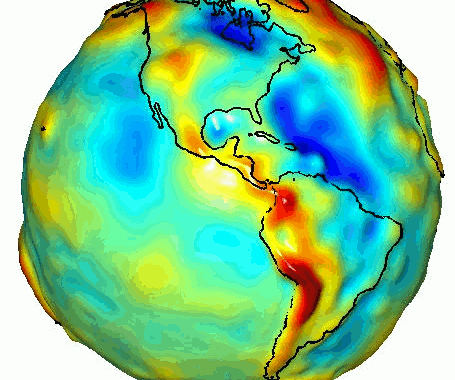A new year starts and suddenly a lot of people are concerned about their gravitational attraction to the Earth.
In January new subscriptions to the gym spike compared to every other month. Weight watchers and a lot of the other programs for weight reduction invest in every commercial break on TV.
Gravity is a very well-known physical process, in a sense that everyone knows gravity exists. Some old indian guys even wrote about it before Aristotle. However, we have a couple of problems describing gravity. On Earth, we stand on a huge ball of mass. So the first descriptions of a gravitational force were pretty simple that an object will always fall down towards Earth.
This of course is not wrong, yet it took quite some time to figure out that gravity does not only have things fall down but in general have objects attract each other proportional to their mass. So in principal when we look at the Earth as a gravitational object, the Earth does not only attract us but we also attract Earth – At least a tiny bit. We trust a mechanical device to measure this attraction and tell us our weight.
This weight would be the same on every place of the world, right?
No. I’m not talking about kilogram, pound or stone here, it’s something quite different. When we measure ourselves on a scale, this scale measures the attraction of the mass below us to the mass we put on the scale, our body weight. If the Earth was a homogeneous ball that had the same density and material at every single place in this ball, the weight would not be different if we travelled around with our scale. But this isn’t true. There are very different materials that make up our Earth. Also there are accumulations of resources like sand, oil, uranium, ores that make up fields of a material that has a very different density than the surrounding rock.
This is something we can use in geophysics. Imagine we take a very sensitive scale and measure at different points on Earth, we would get different results for the subsurface. Of course this wouldn’t work with our own body weight, anyone who has weighed in on a couple of consecutive days knows that body weight can fluctuate within a range of kilograms over days. We need a constant mass for this if we want to know how the subsurface changes. This has been done with the whole world:
Don’t worry, this wasn’t done by underpaid interns. Our technology has advanced so far that NASA has a satellite that can do this trick. Now this seems kind of odd. A scale that doesn’t touch the ground?
Well, I told you before that we just need the gravitational attraction of two objects. We do not necessarily need to squeeze a mechanical device like a scale between those two masses. Another way to do this is to measure the displacement of said mass on a spring or in a magnetic field. This way we get the attraction of the mass to a location on Earth.
So if you’re looking for weight loss look at the map above, and look for a ?blue place?. You will see the scale go down when you measure there. Of course, your mass has not changed but the scale was calibrated for a different gravitational attraction. However, we might encounter a slight problem here: Probably your scale isn’t accurate enough to pick up this change. But a geophysicist can really profit from these gravimetry measurements even though they won’t get us out of adjusting our diet. Guess the only way to lose weight, still is eating less.
Good luck with your New Year’s resolutions!
Jesper Dramsch
Latest posts by Jesper Dramsch (see all)
- Juneteenth 2020 - 2020-06-19
- All About Dashboards – Friday Faves - 2020-05-22
- Keeping Busy – Friday Faves - 2020-04-24


Am I being dense here or isn’t that a magnetic field line image?
You are absolutely correct.